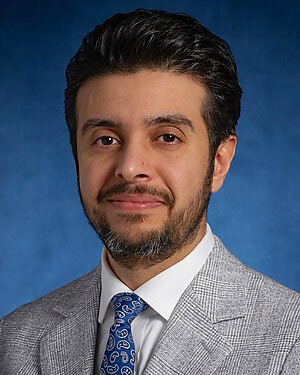You may be interested in cosmetic surgery procedures to achieve a more youthful, attractive appearance or to enhance or change a facial feature.
Why Choose Johns Hopkins for Cosmetic Surgery?
Personalized Treatments
Surgical Expertise
Compassionate Care
Request an Appointment Request An Appointment
Schedule Online Through MyChart
Some exclusions apply.
Available for new and follow-up appointments with most providers.
Log into MyChart | Sign up for MyChart
Schedule by Phone

Injectables and Fillers
-
Injectable facial fillers reduce facial wrinkles and increase tissue volume. They provide a more youthful appearance, giving skin more fullness. You will notice fewer wrinkles and creases where the filler has been injected. Facial fillers can also improve the appearance of scars, making them much less noticeable.
The cosmetic surgeons at Johns Hopkins use a number of widely known FDA-approved injectable dermal fillers as well as fat grafts from your own body. Available fillers include: Botox®, Juvederm® Ultra, Juvederm® Ultra Plus, Perlane®, Radiesse®, and Restylane®.
-
The procedure only takes a few minutes, and you can choose from several locations: The Johns Hopkins Hospital, Johns Hopkins Bayview Medical Center, Green Spring Station and White Marsh.
Depending on what kind of filler you are having injected, there may be a few instructions you need to follow prior to the procedure. You may have to lie down for a few hours after the procedure and the doctor may give you some instructions for taking care after you go home. You won’t have any marks or scarring.
-
 Michele Manahan, M.D.
Michele Manahan, M.D.
Department Vice Chair for Faculty and Staff Development and Well-Being and Past Department Director of Patient Safety
Professor of Plastic and Reconstructive Surgery Mohammed Abdullah A Alrakan, M.B.B.S.
Mohammed Abdullah A Alrakan, M.B.B.S.
Instructor of Plastic and Reconstructive Surgery -
Botulinum Toxin Injectables for Migraines
Wrinkle-reducing treatments that use botulinum toxin injectables may also be used to treat chronic migraines.
Facial Fat Grafting
-
The plastic surgeons at Johns Hopkins use fat grafting for a number of procedures. In facial fat grafting, fat is moved to the face from another part of the body. The procedure may also be called fat transfer, micro-lipoinjection, facial fat rejuvenation, autologous fat grafting or transfer, or fat injection.
It offers a more youthful appearance and can also correct problems like scars. It is commonly used in the lips, the folds that go from the corners of the mouth to the nose, the under-eye areas, and the cheeks.
Facial fat grafting is commonly performed at the same time as other facial-rejuvenating procedures such as a facelift or an eye lift.
-
The facial fat grafting procedure includes three steps. First, fat is removed from another site on the body with a needle. The fat is then cleaned so that only whole, undamaged fat cells are used. Finally the fat cells are injected into the targeted areas. Recovery takes about two hours.
Your doctor may prescribe pain medication for a few days after procedure. You may also be told to stay still for a few days after the procedure. There may be bruising and you will likely have some swelling. Both generally go mostly away in a couple of days and the swelling should be completely gone within four weeks.
-
 Michele Manahan, M.D.
Michele Manahan, M.D.
Department Vice Chair for Faculty and Staff Development and Well-Being and Past Department Director of Patient Safety
Professor of Plastic and Reconstructive Surgery Mohammed Abdullah A Alrakan, M.B.B.S.
Mohammed Abdullah A Alrakan, M.B.B.S.
Instructor of Plastic and Reconstructive Surgery
Brow Lift
-
A brow lift, also called a forehead lift, reduces the wrinkles and creasing that appear on the forehead. It can also reduce sagging in the brow and lift it if it is too low.
Our surgeons can help you decide which surgery will work best for your goals.
-
For a few days after the surgery, you will have swelling and bruising on your forehead and possibly in the cheek and eye area as well. Your doctor will give you more detailed information and instructions for care prior to the surgery and after.
Generally, you can expect your recovery to take no longer than two weeks.
-
 Michele Manahan, M.D.
Michele Manahan, M.D.
Department Vice Chair for Faculty and Staff Development and Well-Being and Past Department Director of Patient Safety
Professor of Plastic and Reconstructive Surgery Mohammed Abdullah A Alrakan, M.B.B.S.
Mohammed Abdullah A Alrakan, M.B.B.S.
Instructor of Plastic and Reconstructive Surgery
Lip Augmentation
-
Lip augmentation makes your lips look fuller. The procedure can be done in one of two ways: by adding materials to the lips through fat grafts or the use of hyaluronic acid injectable dermal fillers, or by advancing lip tissue. Advancing lip tissue involves moving tissue from your inner lips outward to create an appearance of fullness.
-
The plastic surgeons at Johns Hopkins do the procedure by making small incisions or by injection. It is an outpatient procedure performed under local anesthesia with or without sedation.
Lip augmentation requires very little recovery time and the bruising and swelling will subside within two weeks. Injectable dermal fillers are temporary and typically last 6-12 months before another injection is necessary. Fat grafts or other implants have the advantage of a potentially permanent result and may require longer recovery.
-
 Michele Manahan, M.D.
Michele Manahan, M.D.
Department Vice Chair for Faculty and Staff Development and Well-Being and Past Department Director of Patient Safety
Professor of Plastic and Reconstructive Surgery Mohammed Abdullah A Alrakan, M.B.B.S.
Mohammed Abdullah A Alrakan, M.B.B.S.
Instructor of Plastic and Reconstructive Surgery
Cheek Implants
-
Cheek implants, also sometimes called cheek augmentation, are inserted to enhance cheekbones or to make the cheeks fuller. Like other types of plastic surgery procedures, cheek augmentation can make your face appear more youthful or balance your facial features, making you feel more attractive.
-
Scarring is minimal with cheek augmentation because the incisions are made inside the mouth or the lower eyelid.
The surgery is an outpatient procedure. You will be given local anesthesia and sedation to ensure your comfort.
-
 Michele Manahan, M.D.
Michele Manahan, M.D.
Department Vice Chair for Faculty and Staff Development and Well-Being and Past Department Director of Patient Safety
Professor of Plastic and Reconstructive Surgery Mohammed Abdullah A Alrakan, M.B.B.S.
Mohammed Abdullah A Alrakan, M.B.B.S.
Instructor of Plastic and Reconstructive Surgery
Neck Lift
-
A neck lift, sometimes referred to as platysmaplasty, can tighten the skin and remove fat in your neck. Having a neck lift reduces the wrinkles and loose skin associated with aging and provides a taut, slimmer profile.
-
At Johns Hopkins, the procedure is done on an outpatient basis and may take a few hours. You will receive either general anesthesia or local anesthesia with intravenous sedation. The plastic surgeon will then tighten the muscles in the neck and remove excess skin and fat. After surgery, your plastic surgeon will wrap a pressure dressing around your head and underneath your chin.
-
 Michele Manahan, M.D.
Michele Manahan, M.D.
Department Vice Chair for Faculty and Staff Development and Well-Being and Past Department Director of Patient Safety
Professor of Plastic and Reconstructive Surgery Mohammed Abdullah A Alrakan, M.B.B.S.
Mohammed Abdullah A Alrakan, M.B.B.S.
Instructor of Plastic and Reconstructive Surgery
Chin Augmentation
-
Chin augmentation reshapes or enhances the size of the chin. The plastic surgeons at Johns Hopkins can do the procedure by using implants or by moving or reshaping bones. You may choose chin augmentation to enhance facial harmony or to make your features more balanced.
Chin augmentation uses fat, bone or synthetic implants to build a better profile. Your plastic surgeon may recommend manipulating the jawbone rather than using an implant. You can decide what kind of augmentation and what kind of implant is best for you in consultation with your plastic surgeon.
-
The surgery is done using general or local anesthesia and will take a couple of hours.
You can expect recovery to take a few days and some activities may be limited for 10 days to a couple of weeks. You may have some numbness for the first few weeks. Swelling subsides within two weeks.
-
 Michele Manahan, M.D.
Michele Manahan, M.D.
Department Vice Chair for Faculty and Staff Development and Well-Being and Past Department Director of Patient Safety
Professor of Plastic and Reconstructive Surgery Mohammed Abdullah A Alrakan, M.B.B.S.
Mohammed Abdullah A Alrakan, M.B.B.S.
Instructor of Plastic and Reconstructive Surgery
Rhinoplasty (Nose Reshaping)
-
Rhinoplasty, often called a nose job or nose reshaping, improves the shape and proportion of the nose, often enhancing facial balance and leading to improved self confidence.
The plastic surgeons at Johns Hopkins can remove a hump from your nose, narrow your nose, and refine the nasal tip. At the same time, the plastic surgeon can also correct a deviated septum, which causes breathing difficulties.
-
Rhinoplasty is an outpatient procedure that may take from one to three hours and is performed under general anesthesia. Patients usually go home after surgery. Dressings may include internal and external splints, as well as packing. You may be somewhat sore for a day or so after the procedure.
-
 Michele Manahan, M.D.
Michele Manahan, M.D.
Department Vice Chair for Faculty and Staff Development and Well-Being and Past Department Director of Patient Safety
Professor of Plastic and Reconstructive Surgery Mohammed Abdullah A Alrakan, M.B.B.S.
Mohammed Abdullah A Alrakan, M.B.B.S.
Instructor of Plastic and Reconstructive Surgery
Cosmetic Ear Surgery (Otoplasty)
-
The plastic surgeons at Johns Hopkins perform cosmetic ear surgery (also known as otoplasty), to change the shape, size or position of the ears. Most commonly, people have ear surgery to make their ears less protrusive or to create a more natural shape.
-
For adults, otoplasty is an outpatient procedure, generally done using a local anesthetic combined with a mild sedative. After the surgery, you may have some mild discomfort, and your plastic surgeon may prescribe pain medication. You may also be advised to use a headband to hold the ears in place for two weeks after the surgery.
Pediatric ear surgery
Johns Hopkins plastic surgeons also perform surgery on children to correct protruding ears, also known as ear pinning. Pediatric otoplasty is most often done on children between the ages of 4 and 14.
-
 Michele Manahan, M.D.
Michele Manahan, M.D.
Department Vice Chair for Faculty and Staff Development and Well-Being and Past Department Director of Patient Safety
Professor of Plastic and Reconstructive Surgery Mohammed Abdullah A Alrakan, M.B.B.S.
Mohammed Abdullah A Alrakan, M.B.B.S.
Instructor of Plastic and Reconstructive Surgery
Eye Lift (Blepharoplasty)
-
The plastic surgeons at Johns Hopkins offer eye lifts (also called blepharoplasty) to correct drooping upper eyelids and bags from beneath the eyes.
An eye lift can open up the eye area, giving you a more youthful appearance as well as a more alert expression. In some cases, people have eyelid surgery to improve their vision, which may be obstructed by the upper lid.
-
Blepharoplasty is an outpatient procedure and you will be given either local anesthesia and a mild sedative, or general anesthesia. It will take about two hours in addition to recovery time.
-
 Michele Manahan, M.D.
Michele Manahan, M.D.
Department Vice Chair for Faculty and Staff Development and Well-Being and Past Department Director of Patient Safety
Professor of Plastic and Reconstructive Surgery Mohammed Abdullah A Alrakan, M.B.B.S.
Mohammed Abdullah A Alrakan, M.B.B.S.
Instructor of Plastic and Reconstructive Surgery
Skin Resurfacing Treatments
-
Skin resurfacing helps rejuvenate your skin by revving up cells called fibroblasts that produce collagen, the most important substance for youthful skin tone and elasticity. Over time, age, smoking, and sun exposure cause collagen to break down, which can lead to fine wrinkles as well as loose, saggy skin. Or, you may be looking to get rid of or reduce acne scars.
You can come to Johns Hopkins for skin treatments, including:
- Microdermabrasion
- Glycolic acid peels
- Laser resurfacing
-
Microdermabrasion is a lighter form of dermabrasion that uses abrasive particles to remove sun-damaged skin and remove or lessen acne scars and other blemishes as well as reduce the appearance of wrinkles. You may need several treatments to achieve the look you want.
It’s not very painful and doesn’t require any anesthetic. Your face may be slightly red for an hour or so after treatment.
-
Glycolic acid peels refine the texture and tone of the skin. On the surface, they give immediate smoothness by removing the dull, rough layer of dead skin cells. Over time, they also fade uneven pigmentation and promote skin-firming collagen. These peels generally do not cause any social downtime. It is best to avoid intense sun exposure in the two weeks following each peel.
TCA (trichloroacetic acid) peels act more deeply in the skin. They can be used as spot treatments for pitted acne scars (called the "TCA Cross Method") or all over the face to address sun damage. These peels are best for lightly pigmented skin types as darker skin types can have unwanted loss of pigmentation from this treatment. There are several days of redness following the peel which could mean social downtime if the whole face is treated.
Salicylic acid peels are best for treating acne and rosacea as they dissolve in oil and penetrate the pores most effectively. These can cause mild redness on the day of treatment, but do not involve social downtime. They can achieve great results on other parts of the body as well and are often used on the chest or back.
-
Laser resurfacing can effectively treat skin tone and texture, with different devices targeting uneven pigmentation, prominent blood vessels and redness, scars, and wrinkles.
-
 Michele Manahan, M.D.
Michele Manahan, M.D.
Department Vice Chair for Faculty and Staff Development and Well-Being and Past Department Director of Patient Safety
Professor of Plastic and Reconstructive Surgery Mohammed Abdullah A Alrakan, M.B.B.S.
Mohammed Abdullah A Alrakan, M.B.B.S.
Instructor of Plastic and Reconstructive Surgery
Facelift
-
Facelifts tighten the skin on the face and neck. The plastic surgeons at Johns Hopkins do two types of facelifts.
In a traditional facelift, your plastic surgeon will make an incision in the hairline at your temples and continue around your ears and down to the lower scalp.
With a limited incision facelift, your plastic surgeon will make shorter incisions at the temples, continuing around the ear and then possibly inside the lower eyelids or under the upper lip.
-
The surgery can be done as an outpatient procedure, using general anesthesia. Expect it to last between three and six hours, depending on the amount of surgery necessary and desired. Although many patients leave after surgery, your plastic surgeon may recommend an overnight stay depending on the length and complexity of the procedure. Sometimes your plastic surgeon may use a drainage tube that stays in place for one to three days.
-
 Michele Manahan, M.D.
Michele Manahan, M.D.
Department Vice Chair for Faculty and Staff Development and Well-Being and Past Department Director of Patient Safety
Professor of Plastic and Reconstructive Surgery Mohammed Abdullah A Alrakan, M.B.B.S.
Mohammed Abdullah A Alrakan, M.B.B.S.
Instructor of Plastic and Reconstructive Surgery -

